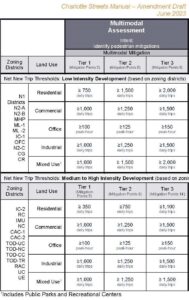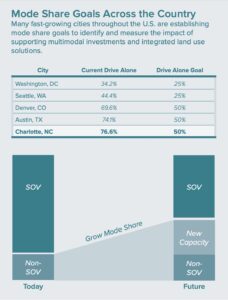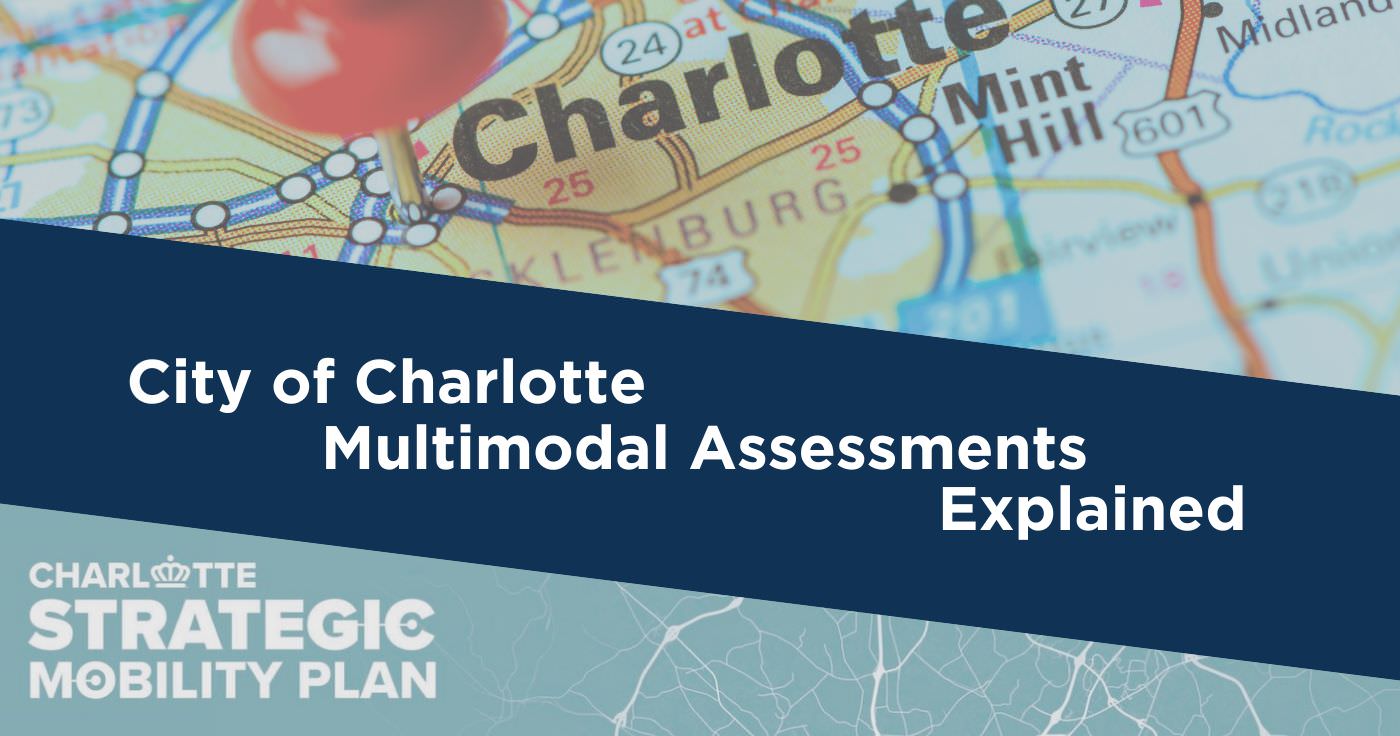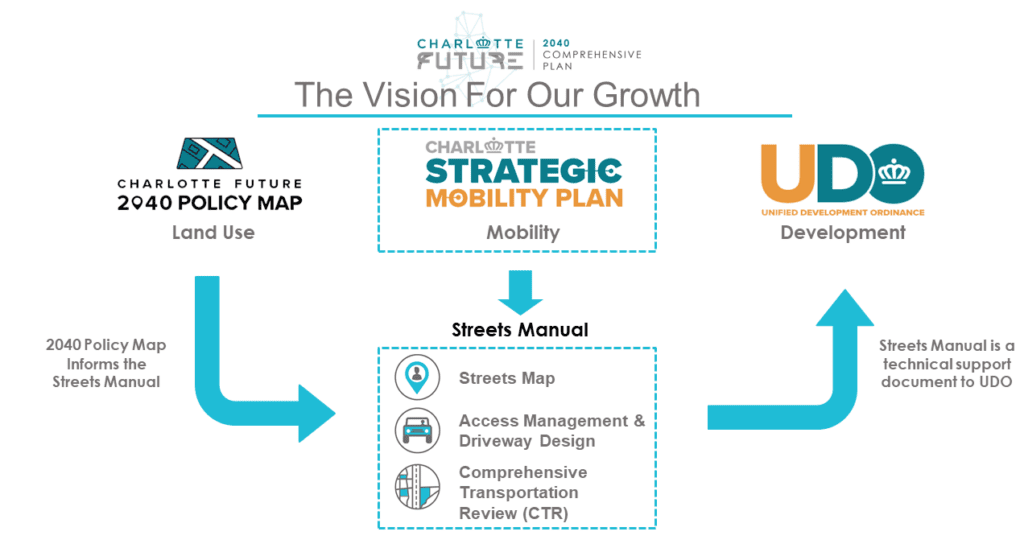As part of the City of Charlotte’s Comprehensive Transportation Review (CTR) Guidelines, Multimodal Assessments serve to identify pedestrian, bicycle, and transit-related infrastructure necessary to establish an “accessible and connected multimodal network.”

The City states that “the intent of a Multimodal Assessment (MA) is to identify site-specific and development-related pedestrian, bicycle, and transit-supportive infrastructure necessary to establish an accessible and connected multimodal network.” Based on the zoning district and anticipated trip generation the City has established three tiers of assessments with varying degrees of mitigation required.
The thresholds that trigger Multimodal Assessments are shown in this excerpt from Table 3.1 of the Charlotte Streets Manual. (See our Charlotte CTR Guidelines article for the complete Table 3.1 including thresholds for traffic impact studies and transportation demand management assessments.)
Background and Context for Multimodal Assessments

Multimodal Assessments are one of three types of transportation assessments that may be required under the CTR Guidelines. Also included are traffic impact studies (TIS) and transportation demand management assessments in Charlotte.
The CTR defines the process for the transportation review for private land development projects. This process ensures that mobility impacts of new development are appropriately mitigated and are implemented based on Council-adopted plans and policies.
On June 21, 2021, the Charlotte City Council adopted the Charlotte Future 2040 Comprehensive Plan, which serves as the long-range plan to guide development and investments made in the City. In addition, the Charlotte Strategic Mobility Plan was adopted to provide a blueprint for providing safe and equitable mobility in Charlotte. A specific goal of the plan is to reach a 50-percent level of single occupancy vehicle trips in the City, and these planning and policy documents were used as the blueprint to create the CTR and the City’s Unified Development Ordinance.
Charlotte Multimodal Assessments Explained
Multimodal Assessments can include analyses of:
- sidewalks and shared use paths: including identification of missing or non-compliant sidewalks and curb ramps
- intersections and accessible ramps: including presence of accessible clear paths, curb ramps with detectable warning surfaces, and signals with audible pedestrian signals
- pedestrian crossings: identifying both needs and opportunities
- street lighting
Additionally, under Multimodal Assessments, applicants must:
- Include a summary of the Multimodal Assessment in the submitted CTR Report for review and approval. If no TIS is required, the MA summary should instead be submitted in table form in the construction plan/rezoning as part of the land development review process. The summary should include: documentation of required MA mitigation points; a list of proposed MA mitigations, including related point values; and plans, descriptions, and locations of the physical MA mitigations.
- Review and assess the publicly accessible pedestrian network within ¼ mile walking distance of the site to identify multimodal infrastructure needs, and
- Provide infrastructure improvements as necessary to achieve their required number of mitigation points.
Many of the City’s multimodal network needs have been documented in the City of Charlotte’s ADA Transition Plan (for public right-of-way and transit) and in CDOT’s list of approved pedestrian crossings and signal locations. A menu of options is provided with associated mitigation points.
Contact our Charlotte Traffic Engineering Team
Patrick Monroe, P.E.
Regional Manager
pdmonroe@wellsandassociates.com
As a Professional Engineer based in Charlotte and a former Senior Engineering Project Manager at CDOT, Patrick works with our clients on a wide range of traffic engineering projects including multimodal assessments.



